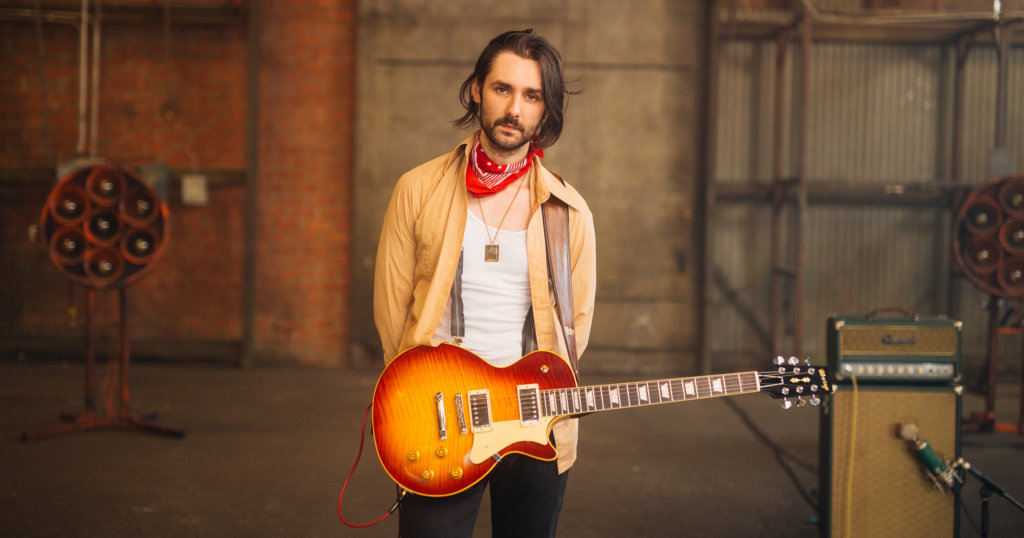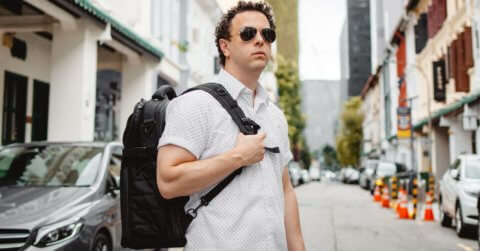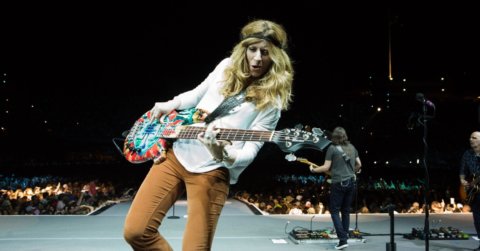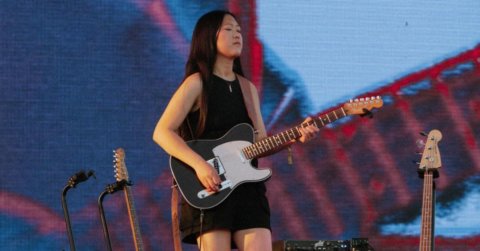If you’re a fan of anything and everything to do with the guitar, Zane Carney should be a name that you’ve got to know. Described as a “massive guitar player” by acclaimed bassist Thundercat and hailed as “the future of electric guitar” by HuffPost, Zane Carney has made significant contributions to some of the most celebrated music of the past decade.
Seven years on from his last album release, Zane Carney is now taking center stage again and has formed a quartet to realize his calling for LA Jazz. Thus far, they’ve released 3 teaser songs with the track “Pitchfork” being rapturously received and included on some of Spotify’s major jazz playlists.
As we approach the release of the quartet’s debut album, “Alter Ego”, on the 30th of April, we managed to snag some of Zane’s time to nerd out about gear, jazz music, live streaming, and a whole lot more.
So you’re best known for your touring work with a plethora of artists, but over the past 2-3 years you’ve been working on music as a composer and artist. What were the factors that made you move towards that direction?
I was very lucky to start off my musical career as a founding member of CARNEY with my brother Reeve – that was really the genesis of my composer and writing sensibilities – and that helped make sure that I use my composer’s mindset in all of my collaborations. I’ve always loved exploring the fundamentals of a song whether that’s by jazz improvisation or through-composed pieces.
That being said, I have to give credit to this period of lockdown for getting new works across the finish line. I’ve noticed that the first 95% of the creative process (writing/performing) takes just a few days – even an instant – whereas the final 5% (mixing, mastering, artwork, distribution, promotion, etc.) takes months, even years. So, I’m grateful to have had this time off the road to give my all to that last 5%.

You’ve played punk rock, pop, blues and a whole lot of genres throughout your career. It is obvious you have the chops to make an album in any given style of music but you’ve chosen jazz as your vehicle of choice. While it is well documented that you’ve studied jazz guitar previously, can you explain your history with jazz and why you think going down this path is your true calling?
I’ve always found it interesting that people think of non-jazz genres when they think of me, because my truest nature is that of a jazz guitarist! It was Wes Montgomery who awakened my desire to study the guitar and the only genre I’ve ever felt truly like myself in is jazz. But, since Pop and Rock have such larger audiences, it makes sense that people might think of those things when they think of me. The irony here is that I’ve had to work so hard to de-jazz my playing when I’m working in other fields!
I think jazz became my vehicle at age 12 because of the limitless possibilities each improvised moment offered. The more I grew, the more harmonies and melodies I had at my disposal and here I am decades later, still discovering new ways to connect and express in a group setting. I love that jazz offers a judgement free zone to explore any sort of combination of notes one can think of – that freedom speaks to me at a core level.

“Ferocious LA Jazz” is how we’ve heard you describe your upcoming album “Alter Ego”. We’ve heard snippets of the album and we’ve been blown away. From a theory and compositional standpoint, how do you write the songs on the album?
I had a very specific concept coming into the creation of “Alter Ego”: I wanted to document the thriving, passionate improvisation of the LA jazz scene in pure form. Having played on quite a few jazz records in my day, I knew that the only way to capture the organic improvisation was to lessen the amount of sheet music and increase the amount of freedom each member felt they had.
So, while I did have a few compositional sketches in my back pocket (namely “Brain Freeze” and “Pitchfork”) I tried to empower each member by making it more “tape is running, let’s discover something new right now” and less “check out the coda that happens halfway through measure 97.” Because of this, most of the record contains these immediate compositions that have a heavy emphasis on musical dialogue and discovery.

It’s almost 7 years since the release of your debut jazz album “Amalgam”. Could you describe what the evolution of your music has been since then? Any lessons that you’ve gotten from then that has gone into making and producing “Alter Ego”?
Absolutely! My goal with Amalgam was to bring jazz to audiences that might not traditionally be interested in the art-form. So, the harmony was less dense, the melodies were more repetitive and the songs were shorter.
What I love about that album, is that it prepared my non-jazz listeners for the next step which was revealing my core improvisational senses on this newest album “Alter Ego”; a full on bombastic, rule-less jazz album.

Let’s talk gear! What are some of your favorite guitar, amps, and stompboxes at the moment? Also let’s throw in a curveball, what is your favorite piece of non-guitar related studio equipment you think people are sleeping on?
Ooh, a few things! First off, I’ve been using my Quarantine Effects USA Time Machine Pre-Amplifier (The Six) a LOT these days! This is a brand new pedal from a brand new company created and hand built by my brother Reeve Carney! I’m so proud of him and in awe of the nuance and transparency of these pedals. He even came out with a new fuzz pedal recently called The Aviator that’s featured on my Alter Ego: The Concert Film in the interlude after “Things You Aren’t.”
Speaking of that concert film, I played my new Heritage H-575 Artisan Aged during the show and I’ve been all about that guitar these days. I play it all the time on my Twitch streams and it’s become my go-to jazz box. Something about size 13 strings on a fully hollow body just does the trick for me, what can I say!
As for “Alter Ego” (the album and the concert film) I’m using a very special Siegmund Sound King Amplifier with a 15” field coil speaker cabinet. That really became the sound of the record so I had to use it for the filming of our live album release concert.
And when it comes to non-guitar gear, there have been two crucial tools in my live streams. One, my Universal Audio Apollo 8p which has allowed me to monitor all my effects in real-time so I can play inspired and two, my Blue Microphones Bottle which has become a quarantine workhorse for me. I use it on just about everything and have 5 capsules that help me switch from lead-vox to acoustic guitars while shifting the tonal spectrum depending on the source.

Live streaming is an avenue that a lot of musicians have been turning to in recent times. We’ve seen you interact with your fans discussing a whole range of topics including video games, music theory and so much more. Fan interaction aside, what have you learnt from live streaming that you did not realize before you started?
I will say, I think the main thing I’ve learned from live-streaming is that it’s such a powerful tool for making a difference in people’s lives. I’ve discovered that streaming isn’t about performing, it’s about creating community. There’s an intimacy that I think the audience has always felt with the performer on stage, but with live-streaming, we as the performer finally get to know our audience.
That being said, I know you asked about non fan-interaction lessons and I’ve learned that streaming truly is it’s own art-form. I can bring my musical skills to the table, but if all I’m doing is performing a concert, people will eventually just go to YouTube where they can watch at a time that works best for them. So, live-streaming is in that sense, quite different from putting on a great production at a venue and I’ve really enjoyed exploring the infinite ways it can serve people.

What do you miss most about touring? And do you have plans for tours lined up?
What I miss most is the magic of creating live on stage with a group, and that’s why I absolutely had to film Alter Ego: The Concert Film with the band. As much as I love being in front of an audience, the real magic of touring is having an excuse to create with band members in real time.
As for touring plans, now that things are opening back up I’ve been approached with a few opportunities both at home and abroad, and I expect to share tour dates later this year.

Speaking of touring, what’s in your MONO case?
I actually have a few MONO cases that I bring with me whenever I tour!
My main touring pedalboard travels in my MONO Tour 2.0 Accessory case which fits in overhead bins and has been so durable these past few years. That pedalboard has some really fancy new toys on it including a Chase Bliss Generation Loss and Montreal Assembly Count To Five.
Once I head back out on the road I’ll be using my MONO M80 Flyby Ultra backpack to carry two DSLR cameras, a Blue Kiwi, Laptop and Capture Cards… basically, a mobile live streaming and recording studio in one backpack! I’m really excited about using this backpack to make sure I keep streaming once touring resumes.

Lastly, what’s next in the pipeline for Zane Carney?
What’s next is breaking down the boundaries between my jazz work and my solo singer/songwriter project. I have equal love for both improvisation and composition and I want to see how these two forms influence each other, especially as I throw in the added variable of lyric craft.
I started this process with “Alter Ego” and I look forward to seeing where it takes me.
Listen to Alter Ego here:
Check out all our other artist features here.



